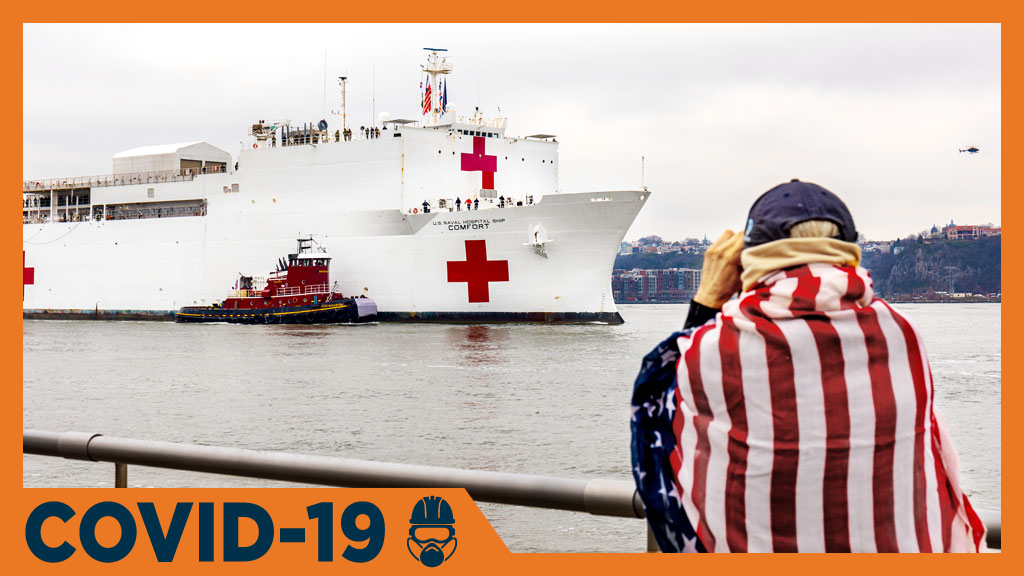A veteran U.S. architect with 50 years in the adapted re-use sector is calling for all stakeholders to work collaboratively as never before to deliver the additional hospital capacity New York state needs immediately to fight the COVID-19 onslaught.
Stephen B. Jacobs of the Stephen B. Jacobs Group, based in New York City, has done complete retrofits from brownstones to skyscrapers. With the number of cases of COVID-19 rocketing to 37,000 cases as of March 26, Jacobs laid out principle authorities should follow to get emergency health care capacity built right away.
“In terms of what is happening in the New York area, we need to double our hospital capacity overnight,” said Jacobs recently.
“And I would say architects have a unique set of skills ideally suited for that task.”
On March 21 New York Governor Andrew Cuomo announced that the Army Corps of Engineers had identified four initial sites in the state as possible temporary hospitals including the Javits Convention Center in New York City.
Later in the week, according to U.S. news sources, Cuomo said a set of overflow facilities would be required in each of Nassau, Suffolk, Westchester and Rockland counties as well as in each of New York City’s five boroughs. It was stated that the state would require 140,000 hospital beds by a predicted peak of mid-April, more than double its initial capacity of 53,000.
Among many challenges Jacobs identified, the lack of centralized coordination of the process looms large. Authorities in the tri-state area — New York, New Jersey and Connecticut — are cooperating, in his analysis. But Cuomo has squabbled with the federal government on everything from supplies of ventilators to the amount of aid targeted to help the state.
“This has to be organized on a regional basis,” said Jacobs. “It requires some centrally organized effort. It can’t be done helter-skelter. They have to identify where the needs are.”
Certainly, the expertise of the Army Corps of Engineers and the military needs to be tapped, he said. No one in the private sector has the direct skills that the Army Corps can summon in times such as the current pandemic, although there are private sector contractors who do work for the military who could get involved.
“The military is experienced in war-time conditions,” he remarked. “They can set up a field hospital in 24 hours, they have the equipment and plans and they know what they are doing.”
The architectural profession is also suited for the early stages of the process, Jacobs explained, because architects have the ability to evaluate the potential adaptability of buildings.
“Architects are trained to be the leader of the construction team. They are well versed in how to organize and coordinate the work and the abilities of various disciplines.”
Schools and hotels are ideal candidates for emergency health centres, given they are generally not in use these days, but hotels are in private hands while schools are spread throughout most communities.
A swift but comprehensive canvass of an identified building including materials is required. From the point of view of life safety, the structure must have appropriate points of egress and fire protection infrastructure, and sanitary conditions must be adequate.
“There are certain old buildings that might have things that make them not eligible like lead paint and asbestos,” Jacobs said.
The emergency facilities need not be as sophisticated as new hospital builds are, he said.
“In a way, we are probably going back to a low-tech solution,” said Jacobs, who described his status as willing to offer advice and pitch in as the emergency program gets underway. “A new hospital from start to completion can be five or six years. The Chinese put together a massive temporary hospital in 10 days, but we may not have that type of capacity.”
The tug-of-war that has gone on as the state meets resistance in marshalling adequate resources might not happen in Canada, said the architect, who has done lots of work north of the border.
“In Canada you have the will to organize at least on a province-wide basis,” he said. “You have a centralized health care system, we lack all that.”
Follow the author on Twitter @DonWall_DCN.











Recent Comments
comments for this post are closed